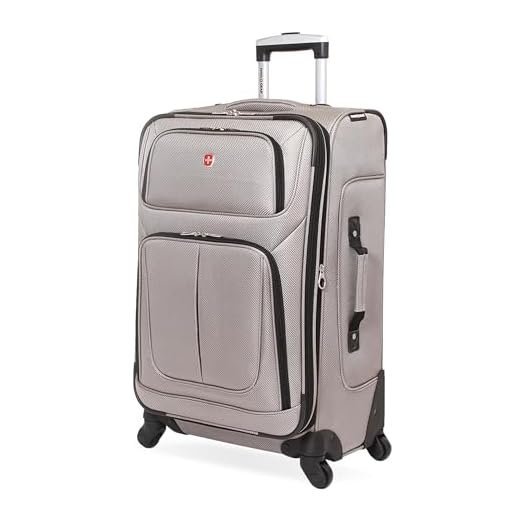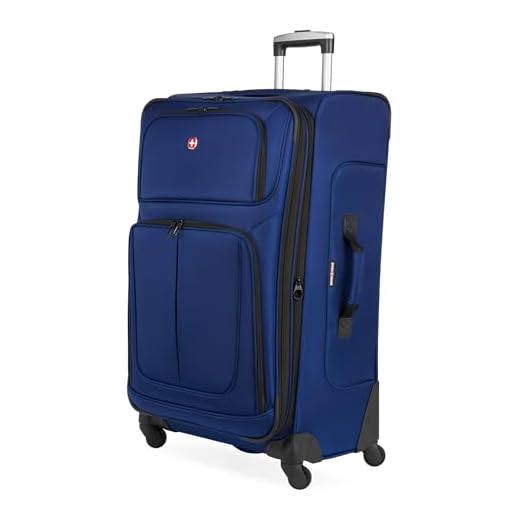



For those prioritizing durability and protection, opting for a rigid case often proves advantageous. These travel containers offer robust exteriors that can withstand rough handling during transport. If you’ve experienced concerns about fragile items breaking, a solid option will shield your belongings effectively.
Conversely, if flexibility and packing efficiency are key, a soft option may serve you well. These designs typically allow for more spacious packing, accommodating odd-shaped items, and they often feature external pockets for quick access to essentials. Lightweight materials contribute to easier maneuverability and handling during your travels.
When considering weight, rigid constructions tend to be heavier than their pliable counterparts. This aspect can influence baggage fees with airlines and ease of transportation through crowded terminals. Therefore, choosing between these two styles often hinges on what characteristics matter most for your specific travel needs.
Is Hard Sided or Fabric Luggage Better
Opt for a rigid option if you prioritize maximum protection for fragile items. These collections typically feature robust exteriors that resist impacts and prevent accidental opening during travel.
Conversely, choose a soft variant if flexibility and lightness are important to you. These tend to be easier to fit into tight spaces and often weigh less, allowing for a larger carrying capacity without exceeding weight limits.
For travelers who expect to encounter various weather conditions, consider that most sturdy versions tend to be more resistant to water, providing an added layer of security for your belongings. However, some pliable choices come with weather-resistant coatings, enhancing their durability against moisture.
In terms of organization, many soft carriers come equipped with external pockets, allowing for quick access to essential items. Rigid styles may have restricted external storage but often contain well-designed internal compartments for efficient packing.
Evaluate your travel habits: frequent flyers with substantial luggage may lean towards a sturdy design, while occasional travelers might appreciate the convenience of a softer option. Always consider your specific needs to determine the best fit for your travel style.
Durability: Which Material Lasts Longer?
The longevity of travel containers largely comes down to the materials they are constructed from. Rigid shells typically outperform soft textiles in terms of resistance to impacts, abrasions, and harsh conditions. They are less likely to deform under pressure, maintaining their original shape and protective qualities over time.
Conversely, woven options excel in terms of flexibility and weight. While they may show signs of wear sooner, especially in the presence of heavy loads or rough handling, their ability to expand for additional packing can sometimes contribute to their usefulness during travel.
| Material Type | Durability Factors | Longevity Rating |
|---|---|---|
| Rigid Shell | Highly resistant to impacts, protects contents effectively, less prone to tears | 8-10 years |
| Textile | Flexible, lighter weight, but may wear out faster with heavy use | 5-7 years |
Maintaining travel gear is crucial regardless of material. Regular cleaning and proper storage can extend the lifespan. For rigorous travel demands, choosing containers made from high-quality resins or advanced nylon blends may provide added assurance against deterioration.
Weight Considerations: How Does Each Type Compare?
When evaluating weight, the comparison between rigid and soft options reveals a significant difference. Rigid models typically weigh more due to their construction materials, often comprising hard plastics or composites, which can add up. Soft alternatives, crafted from lightweight textiles, generally provide a weight-saving advantage, allowing for more capacity without exceeding airline restrictions.
For instance, a standard hard-shell variant may weigh approximately 10 to 12 pounds (4.5 to 5.4 kg), while a similar-sized soft-shell piece can range between 6 to 8 pounds (2.7 to 3.6 kg). This discrepancy impacts ease of transportation, especially for travelers prioritizing mobility.
When packing, consider that a lighter option allows for additional contents without surpassing weight limits, crucial for budget-conscious travelers facing airline fees. The optimal choice often hinges on personal preferences regarding durability versus lightweight benefits, along with travel frequency and methods.
Ultimately, inspecting weight specifications before purchase will yield the most suitable option for individual travel needs.
Storage Capacity: Which Offers More Space?
Fabric options generally provide greater storage capacity compared to their rigid counterparts. This is largely due to the flexibility of the materials, allowing the bags to expand when packed. A soft-sided variant can accommodate oversized or oddly shaped items more easily, making it ideal for travelers carrying bulkier goods.
Volume Measurements
For instance, many soft bags range from 40 to 100 liters in total capacity, offering ample space for extended trips. In contrast, models with a rigid structure typically have set volume limits, often averaging between 30 to 70 liters. Hence, for travelers who prioritize packing versatility, soft options are often the preferred choice.
Additional Compartments
Soft models frequently include extra pockets and compartments that enhance organization, enabling travelers to maximize space. This feature is particularly beneficial for those who need to separate items such as electronics, toiletries, or clothing. Rigid designs, while structurally sound, may lack the same level of internal organization, which can limit packing efficiency.
Protection for Contents: Hard vs. Soft Suitcases
For optimal safeguarding of your belongings during travel, choose the rigid option. This type excels in offering superior protection against impacts, punctures, and crushing from external forces.
Key advantages of the rigid choice include:
- Structural Integrity: The solid exterior maintains its shape, providing a barrier against accidental drops and rough handling.
- Water Resistance: Many rigid variants come with waterproof features, keeping contents secure from moisture during rainy conditions or spills.
- Security: Integrated locks are often easier to apply, deterring unauthorized access compared to the softer choices.
Conversely, the flexible type offers limited protection but has its strengths:
- Shock Absorption: The softer material can absorb minor impacts, which may help reduce damage to fragile items inside.
- Easy Storage: Ability to compress when not fully packed allows for better fitting in tight spaces.
- Versatile Packing: Flexible edges accommodate irregularly shaped items more easily than the rigid alternative.
Ultimately, if protection against potential damage is paramount, opt for the sturdy version. Consider your travel style; frequent flyers with fragile items should lean towards the rigid option, while casual travelers may find the flexible variant adequate for their needs.
Price Range: What Can You Expect to Pay?
Prices for suitcases vary significantly based on material and design. On the lower end, simple soft options start around $50, while molded choices can begin at approximately $80.
For mid-range models, expect to invest between $100 to $200. This price bracket typically features better features, such as enhanced zippers and expandable compartments. Premium selections often range from $250 to $500 or more, offering superior durability and advanced functions.
Consider how much use your travel bags will receive. Frequent travelers may benefit from spending more upfront for robust designs, while occasional travelers can find satisfactory options within the lower price points.
Always compare costs and features. Sometimes, reputable brands offer sales or bundles that include additional items, enhancing overall value. For instance, acquiring a top-tier umbrella from the best patio umbrella company can complement your travel needs.
Investing in quality care products, such as the best hand cream for dishwashers keep your hands soft and protected, can further maintain your accessories in excellent condition.
Keep these price ranges in mind while shopping to find the right travel companion that matches both your needs and your budget.








